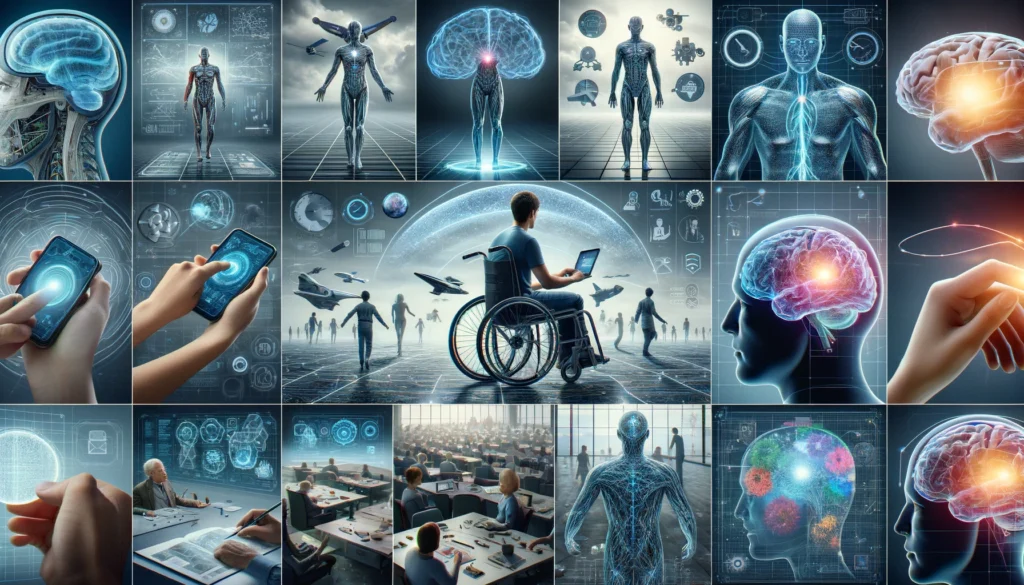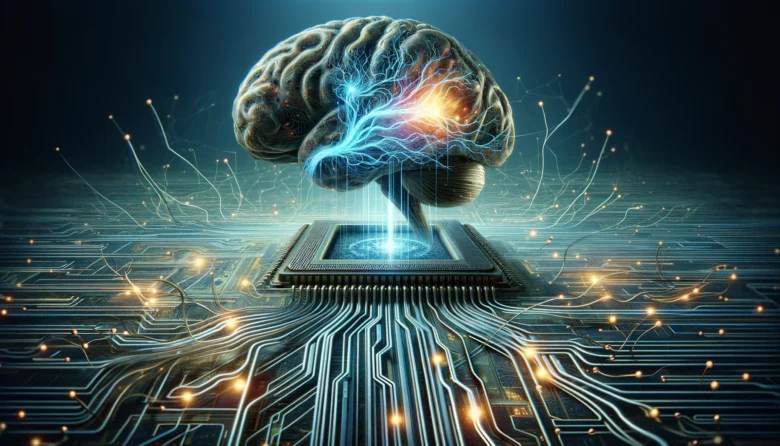Neuralink represents a leap towards the future, where the realms of human cognition and artificial intelligence converge. This innovative technology, spearheaded by Elon Musk and his team, is developing brain-computer interfaces (BCIs) to connect human brains directly to computers, aiming to enhance human capabilities and address neurological disorders.
The Essence of Neuralink
Neuralink’s technology utilizes ultra-thin electrodes, known as “threads,” implanted into the brain to record and stimulate neural activity with unprecedented precision. These threads are so delicate that their insertion into the brain requires the aid of a specially designed neurosurgical robot, capable of performing this delicate task with precision beyond human capability.

At the core of Neuralink’s system is a coin-sized microchip, termed “the Link,” which is implanted under the skull. This chip connects with the neural threads that spread throughout parts of the brain, particularly those controlling motor skills. The chip’s role is to record the electrical signals generated by neurons and, through electrical stimulation, send information back to the brain, thus facilitating two-way communication between the brain and external devices.
Bridging Minds and Machines
The workings of Neuralink are grounded in electrophysiology, capturing the electrical signals that neurons emit as they communicate with each other. These signals are recorded not just when actions are taken but also when actions are merely contemplated. By decoding these signals, Neuralink’s technology can interpret intended movements or actions, allowing individuals to control external devices, such as computers or prosthetic limbs, with their thoughts alone.
Potential Applications and the Path Ahead
Neuralink’s aspirations extend beyond medical applications. While its initial focus is on aiding those with paralysis to regain communication abilities and mobility, the long-term objectives include enhancing human memory, processing speed, and overall cognitive capabilities. The technology holds the promise of a future where direct brain-to-computer communication could revolutionize how we interact with the digital world, learn new skills, and even how we communicate with one another.

In 2023, Neuralink received U.S. Food and Drug Administration (FDA) clearance for a clinical trial in humans, marking a significant milestone toward realizing its ambitious goals. The first human implant took place in January 2024, signaling the beginning of a new era in neurotechnology.
Navigating Challenges
Despite its groundbreaking potential, Neuralink’s journey is not without challenges. The technology’s complexity, the need for precision in implanting threads, and the ethical considerations surrounding brain-computer interfacing are significant hurdles. Moreover, Neuralink has faced criticism over its testing methodologies, particularly concerning animal welfare.
Conclusion
Neuralink stands at the forefront of an exciting frontier in technology and neuroscience. By bridging the gap between the human brain and computers, it opens up vast possibilities for enhancing human life, treating neurological conditions, and exploring new realms of human cognition. As Neuralink progresses, it invites us to envision a future where the boundaries between mind and machine blur, heralding a new chapter in human evolution and capability.
Author’s Note: The potential of Neuralink to bridge the human brain with computers, enhance cognitive abilities, and offer new avenues for treating neurological disorders represents a beacon of hope and a testament to human ingenuity.
As we stand on the brink of what could be the next great leap in human evolution, it’s essential to approach these advancements with a balanced perspective, considering both the immense potential and the ethical, societal, and technical challenges that accompany such pioneering technology.
G.C., Ecosociosphere contributor.
References
- Tomorrow Bio – “Demystifying Neuralink Technology: How It Works and Its Implications for the Future”
- Built In – “What Is Neuralink? What We Know So Far.”





Comments
Thank you for your sharing. I am worried that I lack creative ideas. It is your article that makes me full of hope. Thank you. But, I have a question, can you help me?
Thanks for sharing. I read many of your blog posts, cool, your blog is very good.
Can you be more specific about the content of your article? After reading it, I still have some doubts. Hope you can help me.
Can you be more specific about the content of your article? After reading it, I still have some doubts. Hope you can help me.
Your point of view caught my eye and was very interesting. Thanks. I have a question for you.